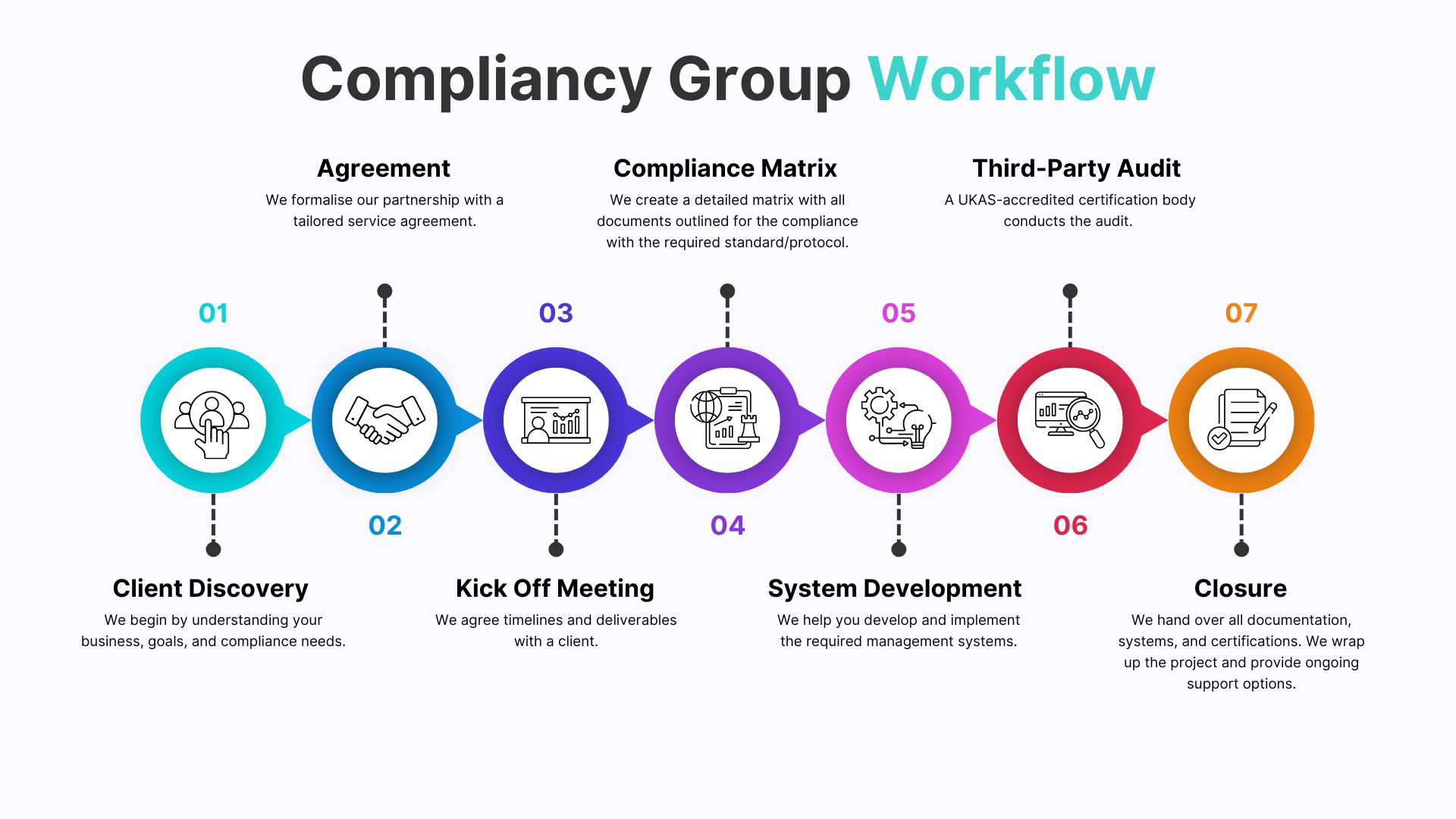We're Here To
Help
A Manual Handling Risk Assessment is a targeted inspection designed to identify, evaluate, and control the risks associated with lifting, carrying, and moving loads in the workplace. Completing a manual handling assessment demonstrates your business’s commitment to employee safety, legal compliance, and proactive risk management – trusted by clients, partners, and regulators across all sectors. With robust manual handling management, you reduce the risk of injuries, improve workplace efficiency, and show you value your team’s wellbeing. Compliancy Group guides you through every step – making manual handling compliance clear, practical, and a genuine business advantage.
We understand the challenges of preventing manual handling injuries and complying with current regulations. Our team brings hands-on experience with risk assessments, control measures, and industry best practice.
No one-size-fits-all here. Whether you need an initial assessment, policy development, staff training, or ongoing compliance advice, our services are fully customised to your operations. We offer flexible support packages—from essential guidance to comprehensive on-site consultancy.
We work exclusively with UKAS-accredited certification bodies and maintain a 100% pass rate for compliance assessments. Our clients trust us to deliver results that stand up to audit and regulatory scrutiny—helping you achieve, maintain, and leverage manual handling compliance for business growth.
Compliance shouldn’t slow you down. We help you build safer environments, reduce risk, and improve operational efficiency—so you can focus on your core business.
You’ll work directly with our expert team, including leadership involvement from our CEO. We pride ourselves on responsive communication, clear guidance, and ongoing support throughout your compliance journey.
Strengthen Reputation
From initial assessment to ongoing support, our team ensures you’re always prepared and confident.
We streamline compliance processes, freeing up your team to focus on core business activities.
Services are tailored to your specific business needs, not generic templates.
Ongoing support, training, and regulatory updates keep your business compliant long after inspection.
Our 100% compliance pass rate and exclusive partnerships with UKAS-accredited bodies mean you’re in safe hands.

Where you identify risks from hazardous manual handling in your workplace that cannot be avoided, you must do a manual handling risk assessment to help you decide what you need to do to manage these risks. Make sure your workforce is fully involved in the risk assessment process.
Manual Handling Principles | Intro •Plan – plan your lift adequately. •Position – centre the body & feet correctly. •Pick – lift item using good posture. •Proceed – move toward desired location. •Place – set object down safely.
Is manual handling training a legal requirement in the UK? Yes, under MHOR, employers must provide appropriate manual handling training to employees involved in manual tasks.
A manual handling risk assessment involves four key steps: identifying hazards, assessing the risks, implementing control measures, and reviewing the assessment. These steps help to minimize the potential for injuries associated with manual handling tasks
the employer Who is responsible for carrying out manual handling risk assessments? Although risk assessments at work are the responsibility of the employer, you can appoint a competent person to carry them out. This person must have sufficient training and experience in carrying out other risk assessments throughout your company.
The golden rule of manual handling is to lift with your legs, not your back. This means bending your knees, keeping your back straight, and engaging your core muscles to lift heavy objects. It also involves keeping the load close to your body, avoiding twisting, and planning your movements to minimize strain
The Manual Handling Operations Regulations require employers to avoid, assess and reduce the risk of injury from manual handling.
In manual handling risk assessments, two key types of assessments are generally employed: generic (or general) and individual (or specific). Generic assessments address the overall needs of the workplace or task, while individual assessments focus on the specific needs of a person or situation
It is at your discretion to decide when a review is deemed necessary, but risk assessments are a working document and, as your business experiences change, this information should be recorded and updated. As a guide, it is recommended that risk assessments be reviewed on an annual basis.